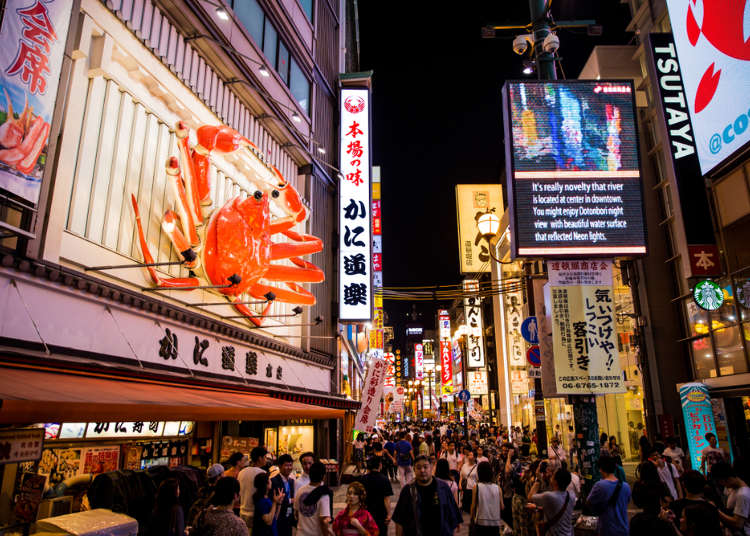
5 Must-See Kansai Area Attractions - Recommended By 167 Foreign Visitors!
- Written by: WESTPLAN
Osaka, Kyoto, and Nara - three major cities found in the Kansai area - are among the more popular destinations foreign tourists love to visit.
As part of the Destination Kansai project, the Kansai Bureau of Economy, Trade and Industry conducted a survey with 167 foreign residents and compiled a list of exciting must-visit Kansai area attractions that will no doubt interest anyone planning for a trip to the region, and we've arranged these places into a convenient ranking list for your quick reference!
Main image: Dan Good Travel / Shutterstock.com
1. World Heritage Site Kinkaku-ji
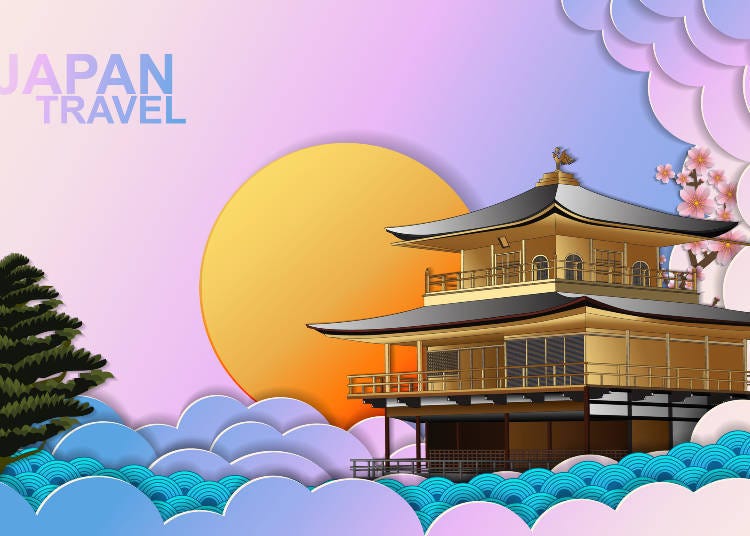
You can't miss the classic Kinkaku-ji if you're visiting Kyoto. This beautiful temple was designated a Historic Monument of Ancient Kyoto in the year 1994 and is also a registered UNESCO World Heritage Site.
Its official name is Rokuon-ji, which means "deer garden temple". Kinkaku-ji is considered one of Shōkoku-ji's sub-temples alongside Ginkaku-ji, another famous historic building in Kyoto.
The building was originally bought over by Ashikaga Yoshimitsu, a shōgun from the Kamakura period of Japan (1185 to 1333 C.E.) from one of his court nobles. The shogun then built up the place as Kitayama-dono villa, with a reliquary hall called Kinkaku at its center.
The Kinkaku hall, overlaid with beautiful gold leaf covering, was so impressive that the temple came to be more commonly known as Kinkaku-ji, which means "golden pavilion temple", instead of its official name.
Whipping out a camera to take a commemorative shot of the beautiful three-storied golden pavilion reflected on the surface of the surrounding Kyoko Pond is a regular activity many impressed tourists will immediately do upon reaching the location - and really, who can blame them?
Some locations around the temple, such as Hojo (only open during special timings) or the Rikushunomatsu, one of Kyoto's three famous pine tree scenes, are worth a closer inspection as well.
-

-
Address
1, Kinkakujicho, Kita-ku, Kyoto-shi, Kyoto, 603-8361
View Map -
Nearest Station
Kitanohakubaicho Station (Keifuku Dentetsu-kitano Line)
20 minutes on foot
- Phone Number 075-461-0013
-
Address
1, Kinkakujicho, Kita-ku, Kyoto-shi, Kyoto, 603-8361
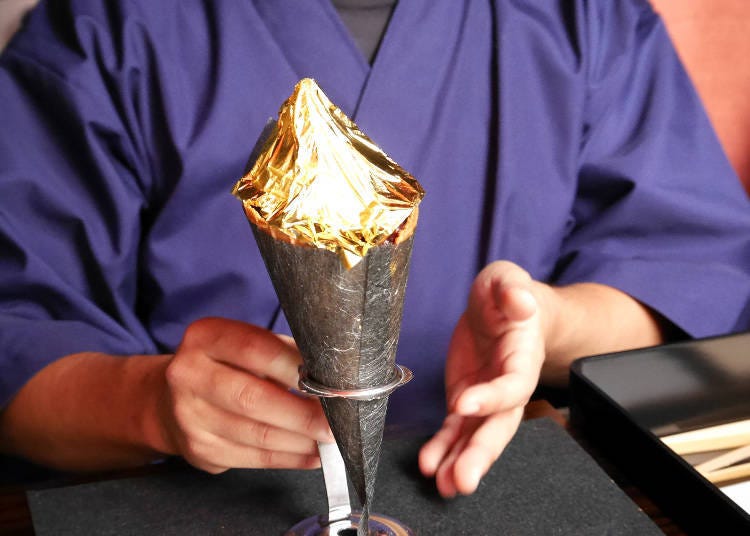
To immerse yourself fully in the Kinkaku-ji atmosphere, try out the Kinkaku Soft Serve Ice-Cream that's as Instagrammable as it's tasty.
Food-grade gold leaf is sprinkled on top of the ice cream for a final glamorous touch, making it look like your personal, edible version of the beautiful temple!
Choose from two flavors - fresh milk cream vanilla or matcha and three types of Kyoto snacks to go along with your gold leaf-covered soft-serve ice cream for the best impact on both your eyes and tummy!
The shop offering this tasty treat is only a 1-minute walk from Kinkaku-ji, so definitely consider dropping by on the way there or back.
-
Kinkaku Soft Serve Ice-Cream金閣そふと
- Address 33 Kinugasa Kitatenjinmoricho, Kita-ku, Kyoto, 603-8376
Hours: 11:00 a.m. -- 5:00 p.m.
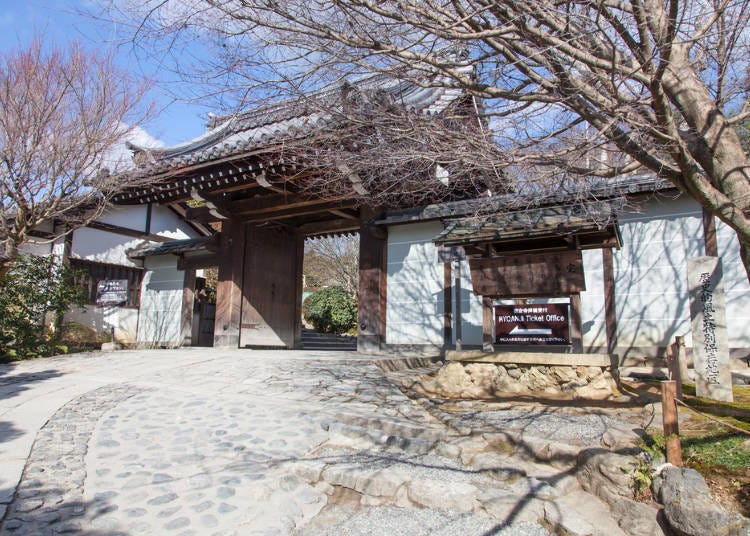
If taking in the sights at a leisurely pace is your type of activity, then you can do no better than to walk down Kinukake Path, a sightseeing pavement that connects Kinkaku-ji, Ryōan-ji, and Ninna-ji, all UNESCO World Heritage Sites. It's the simplest and perhaps most efficient way to enjoy all three temples at your own pace.
Ryōan-ji is a well-known temple among international visitors for its solemn and serene karesansui, or dry landscape Rock Garden.
Located an accessible 18-minute walk away from Kinkaku-ji, it's another building we highly recommend you consider visiting. From Ryōan-ji, Ninna-ji is about an 11-minute walk away. Enjoy the seasonal sights around you as you stroll down this peaceful path designed to make you feel closer to nature.
2. World Heritage Site Tōdai-ji
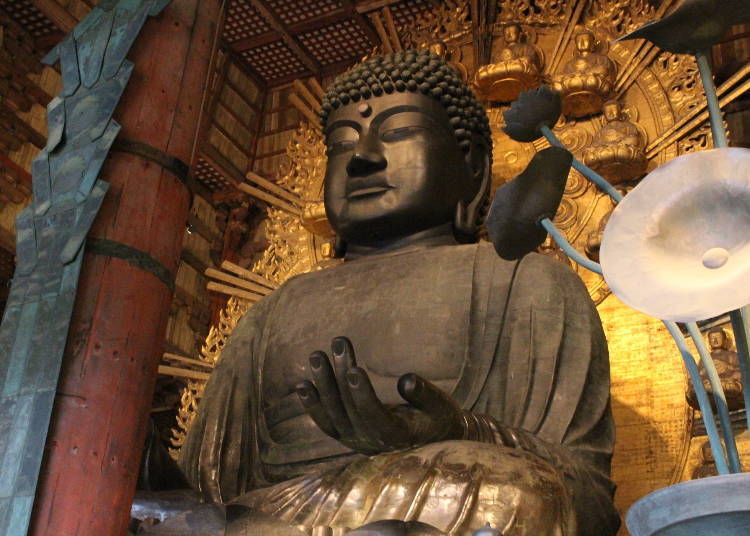
You haven't visited Nara if you haven't visited Tōdai-ji, located right within Nara Park itself. Tōdai-ji was designated as a Historic Monument of Ancient Nara in the year 1998 and is also registered as a UNESCO World Heritage Site.
Why is Tōdai-ji such an important landmark for Nara? This is where the large Buddha statue of Nara rests, after all. The monolithic statue looms at a height of 14.98 meters, or about 50 feet and is a familiar sight to not just local Japanese, but tourists from overseas as well.
Its face alone is 3.2 meters, or about 10 feet wide! The statue was made by Emperor Shōmu during the Nara period (710 to 794 C.E.), for the purpose of bringing happiness to the people of the land through the teachings of Buddhism.
There are many buildings of historic and cultural interest in the wide and spacious temple grounds of Tōdai-ji, other than the hall containing the large Buddha statue, such as Hokkedō (Sangatsudō) and Kaidandō, Nigatsudō that's known for holding the Shunie Ceremony (water ceremony), and a building that contains cultural assets and national treasures.
You can also see plenty of cultural assets like Buddha statues that are considered national treasures at the Tōdai-ji museum. This will be an interesting and enriching trip that you won't regret making!
-

-
Address
406-1 Zoshicho, Nara City, Nara Prefecture, 630-8587
View Map -
Nearest Station
Kintetsunara Station (Kintetsu-nara Line)
20 minutes on foot
- Phone Number 0742-22-5511
-
Address
406-1 Zoshicho, Nara City, Nara Prefecture, 630-8587
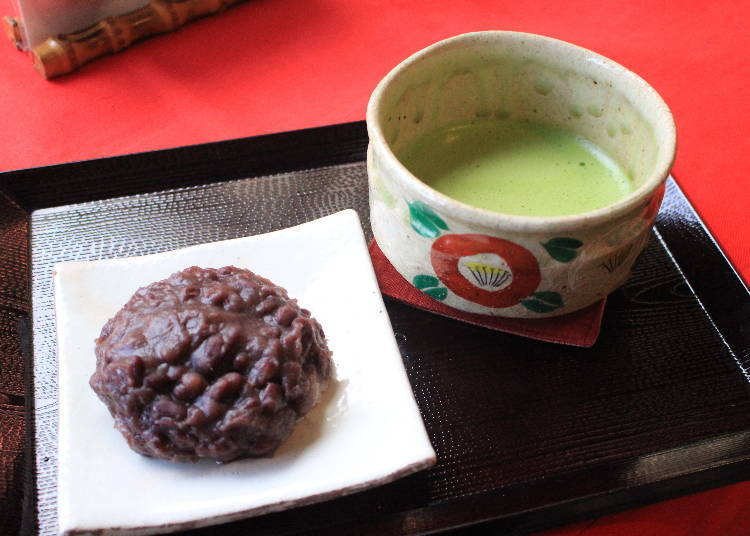
After that intense temple tour, you may wish to rest up a bit at Ryūbidō in Nigatsudō. Here, homemade ohagi (Japanese confectionery stuffed with red bean filling) and warabimochi (starch jelly covered in soybean flour) are being sold alongside delicious traditional matcha.
The visually pleasing parfait dessert and summer-only kakigōri (shaved ice) served in cute-looking utensils will also lift your spirits! Since the exclusive Buddhist miso is only available here, consider buying some back as a souvenir.
-
Ryūbidō龍美堂
- Address Todaiji Nigatsudominami chadokoro, Zoshicho, Nara, 630-8211
- Phone Number 0742-23-6285
Hours: 9:00 a.m. -- 5:00 p.m.
Closed: Not fixed
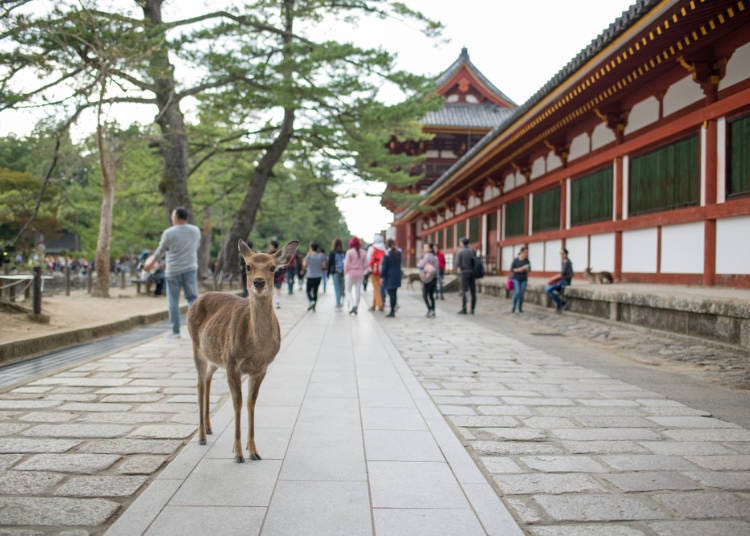
Tōdai-ji is about 4 to 10 minutes by Nara City Loop Bus #2 from Nara Station on the JR Lines or Kintetsu Line. It takes about 20 minutes to reach by foot from the station, so that's an option you can consider taking as well. The fun part about walking to Tōdai-ji is that you're bound to encounter some of Nara's famous deer along the way!
Around the vicinity are other World Heritage Sites or Historic Monuments of Ancient Nara, such as Kasuga Shrine, Nara's iconic Kōfuku-ji where you can see the Five Storied Pagoda, a national treasure of Japan, and the Nara National Museum where various art pieces related to Buddhism are being stored.
3. Kiyomizu-Dera Temple

The world famous Kiyomizu-dera Temple can be said to be the face of Kyoto's tourism industry, and an astounding amount of visitors from overseas flock to this historic temple annually.
Kiyomizu-dera was established about 1,200 years ago as a sanctuary of Avalokiteśvara, the Goddess of Mercy, or Kannon as she's more commonly known in Japan. The main hall is considered a national treasure and was built using an ancient traditional Japanese construction method known as gakedukuri, which means "cliff construction".
As the name suggests, this technology helped builders to construct buildings in places with steep slopes or steps. The southern edge of the canopied flooring on the main hall is a platform that stands about 13 meters, or 42 feet above the ground beneath it. It is the origin of the traditional Japanese saying, "To leap off the the platform of Kiyomizu," indicating a person's resolve to do something and face the consequences, whether good or bad.
Another common impression many foreigners have of Kiyomizu-dera is the Otowa Waterfall of clean and pristine waters. In fact, this is where the name of the temple, Kiyomizu, which means "clear waters" come from. The three streams are said to shower blessings of longevity, academic success, and success in relationships to temple visitors.
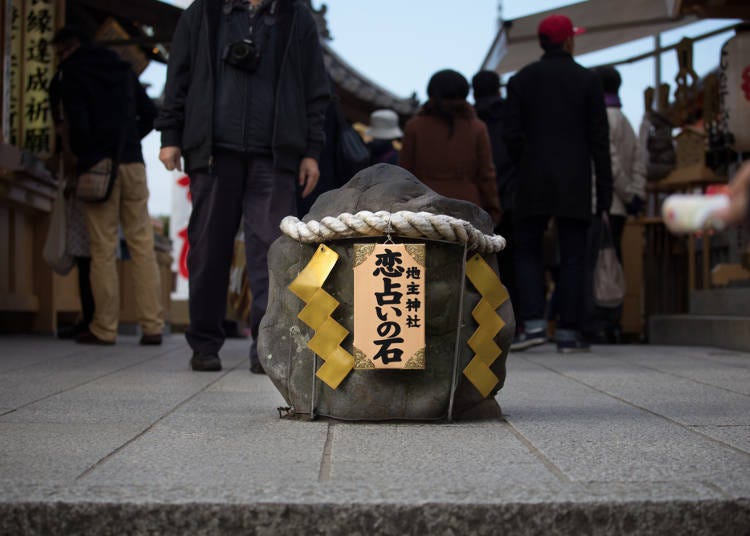
Jishu Shrine at the back of the main hall is a must-see building for visitors of Kiyomizu-dera as well. This historic building is where the god of romantic relationships is said to be enshrined.
There are two Love Fortune-Telling Stones on the shrine premises known to be powerful spiritual spots. Rumor has it that if you can reach the other stone from one while walking between them with your eyes closed, your romantic relationship will in turn see success!
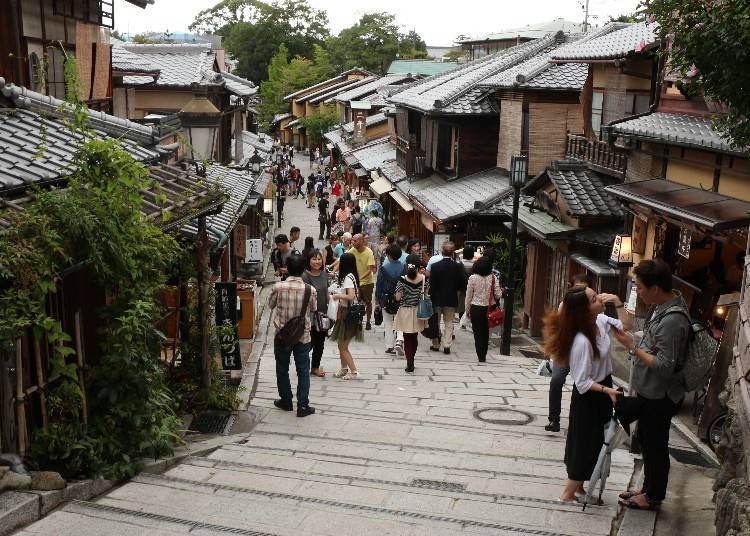
Nearby, you'll also find a pathway made of stone steps and cobblestones called Ninenzaka or Sanneizaka that leads towards the temple, with shops and booths selling various food and items located on both sides.
Head north on this path to reach Nene-no-Michi and Ishibe-Koji Alley at the west side of Kōdai-ji Temple, a building affiliated with Nene, the legal wife of Toyotomi Hideyoshi, a Japanese feudal lord regarded as one of the key individuals who helped unify Japan during the warring period.
Go even farther north from here to get to Yasaka Shrine, where the famous Gion Festival is held annually. This entire journey will only take about 20 minutes on foot from Kiyomizu-dera, so there's no harm in giving it a go!
-

-
Address
1-294 Kiyomizu, Higashiyama-ku, Kyoto City, Kyoto Prefecture, 605-0862
View Map -
Nearest Station
Gionshijo Station (Keihan Line)
25 minutes on foot
- Phone Number 075-551-1234
-
Address
1-294 Kiyomizu, Higashiyama-ku, Kyoto City, Kyoto Prefecture, 605-0862
4. Osaka Castle

Located right in the middle of Osaka City, Osaka Castle Main Keep is easy to reach and therefore a regular destination for many tourists looking to enjoy what Osaka itself has to offer.
According to a publication by Kojodan, an online service that provides comprehensive information about castles in Japan, Osaka Castle has been the most visited castle among local Japanese tourists for three consecutive years since 2017!
Of course, the castle is wildly popular among overseas visitors as well. Toyotomi Hideyoshi, the feudal lord mentioned earlier, begun construction of the castle in 1583 and completed the main keep two years later. Since its establishment, the castle has been burned down twice and the current main keep is a 1931 reconstruction of the original.
Furthermore, the castle underwent a major three-year renovation in 1995. The five-tiered and eight-storied main keep is where you can learn more about Toyotomi Hideyoshi's history and see items related to him and the era he lived in through a number of permanent and special exhibitions.
The observatory deck on the eighth floor is also a great place to enjoy a panoramic view of Osaka City in its entirety. Pamphlets with more information are available in English, Simplified Chinese, Traditional Chinese, and Korean.
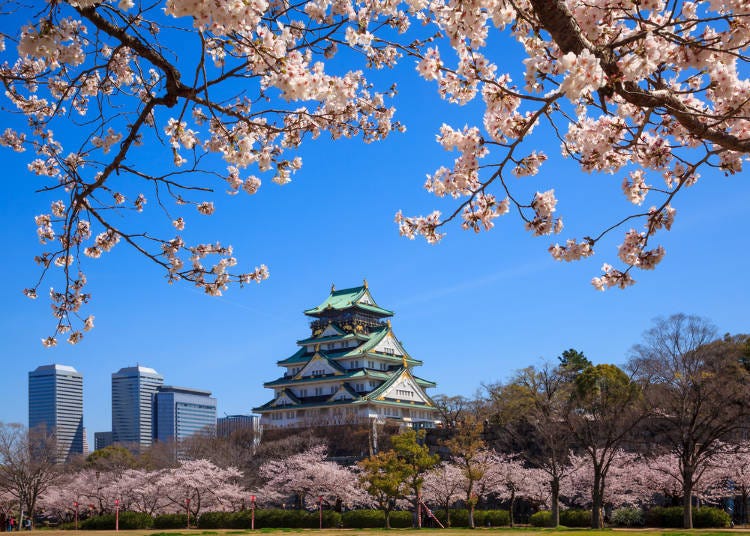
The main keep of the castle is surrounded by Osaka Castle Park, a large municipal park covering an area of more than 100 hectares in all. Scattered about within this spacious park are 13 Important Cultural Properties of Japan such as the Otemon Gate.
The place is also a well-known sakura viewing spot during spring, especially at the beautiful Nishinomaru Garden, Plum Garden, and Peach Garden.
Near Osakajokoen Station is the Jo-Terrace Osaka building where you can have a taste of delicious local soul food such as takoyaki (octopus balls) and okonomiyaki (Japanese pancake).
-

-
Address
1-1, Osakajo, Chuo-ku, Osaka-shi, Osaka, 540-0002
View Map -
Nearest Station
Osakajokoen Station (JR Osaka Loop Line)
- Phone Number 06-6941-3044
-
Address
1-1, Osakajo, Chuo-ku, Osaka-shi, Osaka, 540-0002
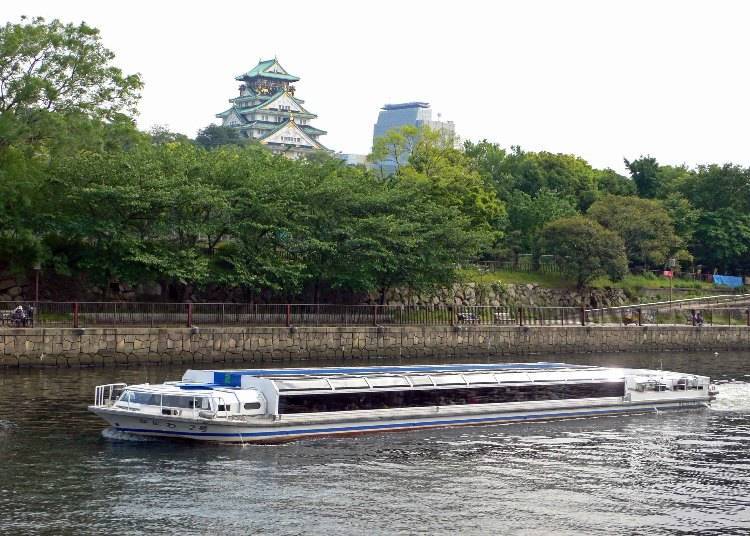
Ready for something unconventional? Hop on the aqua-bus Aqualiner to catch a glimpse of the dynamic Osaka City from atop its water surfaces!
The aqua-bus can be boarded from Osakajo Pier and will take guests on an approximately 55-minutes sightseeing tour, featuring popular sights like the Osaka City Central Public Hall, Japan Mint, as well as other famous buildings, ancient ruins, and the general cityscape of Osaka City.
Don't worry if you're strapped for time - you have the option of getting off halfway at the Yodoyabashi Pier, Hachikenyahama Pier, or other stops along the way.
In fact, you can even use the aqua-bus as a connecting mode of transportation if you like! Tickets for the aqua-bus are available as a set with the Osaka Castle as well, except during peak visitor season.
-
Osaka Aqua-Bus, Aqualiner大阪水上バスアクアライナー
- Address Osakajo pier 2 Osakajo, chuo-ku, Osaka, 540-0002
- Phone Number 0570-03-5551
Hours: 10:00 a.m. -- 4:00 p.m. (departs from Osakajo Pier every 60 minutes, subject to change depending on season)
Price: 1,740 yen (2,040 yen during spring season)
Closed: January and February, check the official webpage for more details
5. Osaka's Minami Area
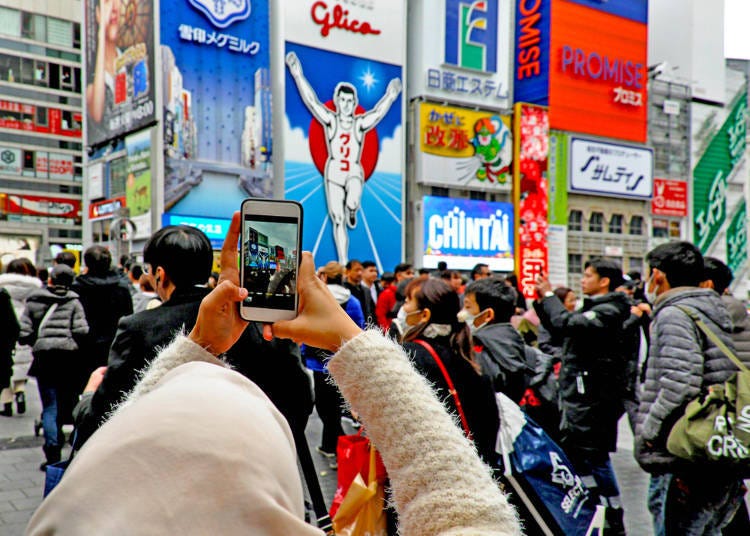
The most popular destination within Osaka is none other than the Minami Area, which consists of the city center, Namba, and Shinsaibashi. The place that sees the most amount of visitors yearly within this area, however, is Dōtonbori, the iconic downtown street that has become the international face of Osaka's Minami Area.
Dōtonbori is a lively area that's immediately recognizable from afar because of the plethora of electrical signboards decorating the place, including the well-known Glico Man, the gigantic moving 3D crab signboard of Kani Dōraku, a crustaceans specialist restaurant, and many other amazing sights you wouldn't expect to see in a regular shopping alley. The almost theme park-like vibe Dōtonbori gives is likely one of the reasons it draws so many visitors.
Ebisu Bridge, which hangs over Dōtonbori River often teems with crowds of tourists trying to grab the best commemorative shot of the scenery around. The street from Shinsaibashi, east of Midosuji all the way south to Ebisu Bridge is the Shinsaibashisuji Shopping Street area, and south of Ebisu Bridge towards Namba Station is the Ebisusuji Shopping Street area.
-

-
Address
Dotonbori, Chuo-ku, Osaka-shi, Osaka, 542-0071
View Map -
Nearest Station
Namba Station (Midosuji Line / Yotsubashi Line / Sen-nichimae Line)
- Phone Number 06-6211-4542
-
Address
Dotonbori, Chuo-ku, Osaka-shi, Osaka, 542-0071
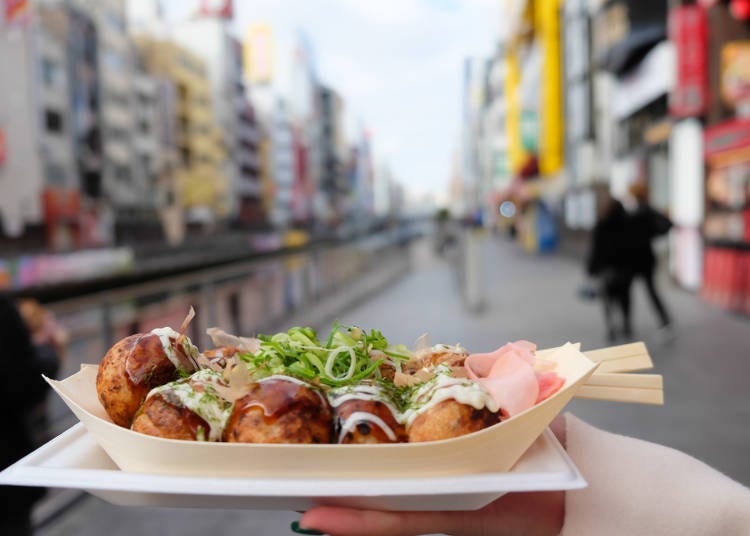
You can't mention Osaka without also mentioning its fabulous flour-based snacks, such as takoyaki, and Dōtonbori just so happen to be full of shops and booths offering this tasty treat!
Some are so good, there are always long queues in front of the shop. You don't have to go with a particular shop in mind, though. Sometimes it may be fun to simply make personal gourmet discoveries as you're walking around, taking in the sights.
If you're not too confident about ordering in Japanese, look out for shops that offer English menus as well! Whatever you choose to do, we highly recommend stuffing yourself with all this delicious food while they're still piping hot for maximum enjoyment.
-
Dotonbori-suji道頓堀筋
- Address 1 Dotonbori, chuo-ku, Osaka (approximate location)
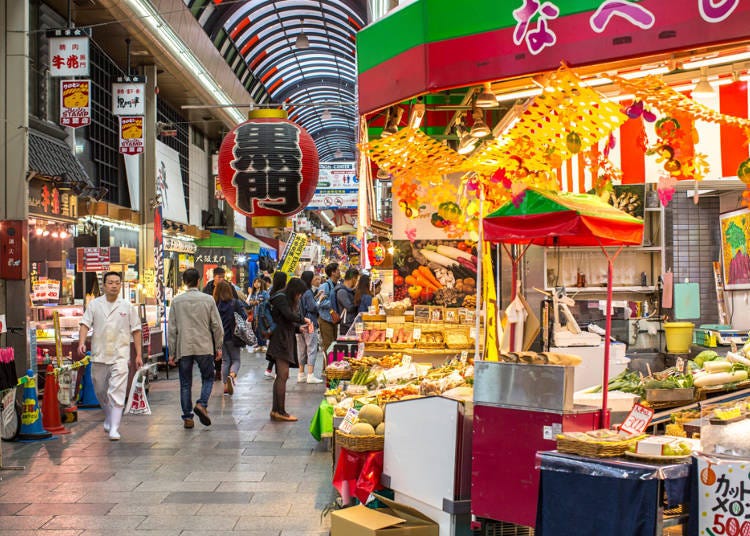
To really get the most out of your food stroll, Kuromon Market is another shopping facility to consider visiting. The roughly 580 meters or 1,900 feet long arcade has about 150 shops tightly packed against each other, with quite a number of shops focusing on selling fresh fish.
This means you'll get to really have a feast on your walk down this alley! Many shops here are uniquely Osaka in a way that reflects the city's reputation as a food paradise, so it's no wonder the place is always packed with foreign visitors as well, here for some respite from their day of busy activities or the fuel up before hitting the next destination.
-

-
Address
2-4-1, Nipponbashi, Chuo-ku, Osaka-shi, Osaka, 542-0073
View Map -
Nearest Station
Nippombashi Station (Sakaisuji Line / Sen-nichimae Line)
- Phone Number 06-6631-0007
-
Address
2-4-1, Nipponbashi, Chuo-ku, Osaka-shi, Osaka, 542-0073
While the five popular places mentioned above can be found in Osaka, Kyoto, and Nara, there are actually plenty of other places in the Kansai area that may appeal to your interests as well.
For example, there's Kobe and its beautiful Western-style Ijinkan mansions as well as bustling Chinatown, or Shiga with the largest freshwater lake in Japan, Lake Biwa, just to name a couple.
Whether you're into shopping, eating, visiting World Heritage Sites, popular hotspots, and old ruins, admiring natural landscapes, soaking in a hot spring, or anything else at all, there's probably an activity made just for you here in Kansai.
With a bit of careful planning, you can even cover most of the major sightseeing spots in the area in just four days and three nights! Kansai is truly an attractive destination for many reasons, and the best way to find yours is to swing by for a visit as soon as possible!
Kiko Matsuda, Keiko Kimura, Risa Tsushi, and a team of female writers familiar with Kansai. We love eating, drinking and traveling! We share fun information based on our experiences.
- Area
- Category
*Prices and options mentioned are subject to change.
*Unless stated otherwise, all prices include tax.
Popular Tours & Activitiess
Recommended places for you
-
Goods

Yoshida Gennojo-Roho Kyoto Buddhist Altars
Gift Shops
Nijo Castle, Kyoto Imperial Palace
-

Kanzenkoshitsuyakinikutabehodai Gyugyu Paradise Sannomiya
Yakiniku
Kobe, Sannomiya, Kitano
-
Events

Sunflower terminal (Osaka) Terminal 1
Other Sightseeing
USJ, Nanko Port
-

Jukuseiniku-to Namamottsuarera Nikubaru Italian Nikutaria Sannomiya
Izakaya
Kobe, Sannomiya, Kitano
-

ISHIDAYA Hanare
Yakiniku
Kobe, Sannomiya, Kitano
-

Kambei Sannomiyahonten
Yakiniku
Kobe, Sannomiya, Kitano
-

New Way to Reach Koyasan! Ride Nankai's 'GRAN Tenku' for a Heavenly Journey
by: Guest Contributor
-

Best Things to Do and See Around Kyoto & Osaka in September: Events and Festivals in Kansai
-

Everything You Need to Know About teamLab Biovortex Kyoto (2025 Insider Guide)
by: Wemmy Chau
-

Kyoto's Hidden Treasures Open This Winter! Enjoy Exclusive Access to 15 Rare Cultural Sites (Jan-Mar 2026)
by: Guest Contributor
-
Ad

Discover Timeless Beauty: Kimono-en, a Web Magazine Exploring the Spirit of Kimono
-

November Events in Kansai: Fun Festivals, Food, and Things to Do in Kyoto & Osaka
Inspiration for Accommodations
-

Spacious Family Hotel in Namba: 20 Comfortable Stays for Family Fun
-

Charming Hotels to Enjoy the Spectacular Views of Arashiyama's Autumn Leaves from Your Room
-

Experience Stunning Views of Osaka Castle from Private Spaces: Top Hotels Near Osaka Castle
-

Recommended by Visitors! Arashiyama's Best-Rated Hotels
-

Family-Friendly Universal Studios Japan Hotel with Excellent Access
-

Enjoy a Comfortable Stay in Osaka! 10 Hotels with Convenient Airport Shuttle Services
-

Top 10 Recommended Hotels Near Namba Station with Great Access
-

Enjoy Night Views from Your Room! Recommended Hotels in Namba Area
-

Todai-ji Temple: Home to the Great Buddha of Nara - And a Nose Hole That Brings You Luck!?
by: WESTPLAN
-
Ad

Bus? Train? Which is the Fastest, Easiest Way to Get From Kyoto Station to Kiyomizu-dera, Arashiyama, and Other Tourist Spots? The Winner is...
-

9 New Must-Visit Spots in Kansai for 2025: World Expo 2025 and Other Exciting Openings in Osaka
by: Miyu Shimada
-

Kiyomizu-dera Temple: Guide to Visiting Kyoto's Most Famous Sightseeing Spot
-

Complete Guide to Kyoto Tower: Great Food, Shopping, and Hotel In Japan's Culture Center!
by: WESTPLAN
-

Top Things To Do in Osaka’s Shinsekai Neighborhood – Recommended by Locals
by: WESTPLAN
- #best gourmet Osaka
- #things to do Osaka
- #what to do in kyoto
- #what to bring to japan
- #best gourmet Kyoto
- #new years in Osaka
- #what to buy in nanba
- #Visiting Osaka
- #onsen tattoo friendly arima
- #daiso
- #Visiting Kyoto
- #best japanese soft drinks
- #japanese fashion culture
- #japanese convenience store snacks
- #japanese nail trends















